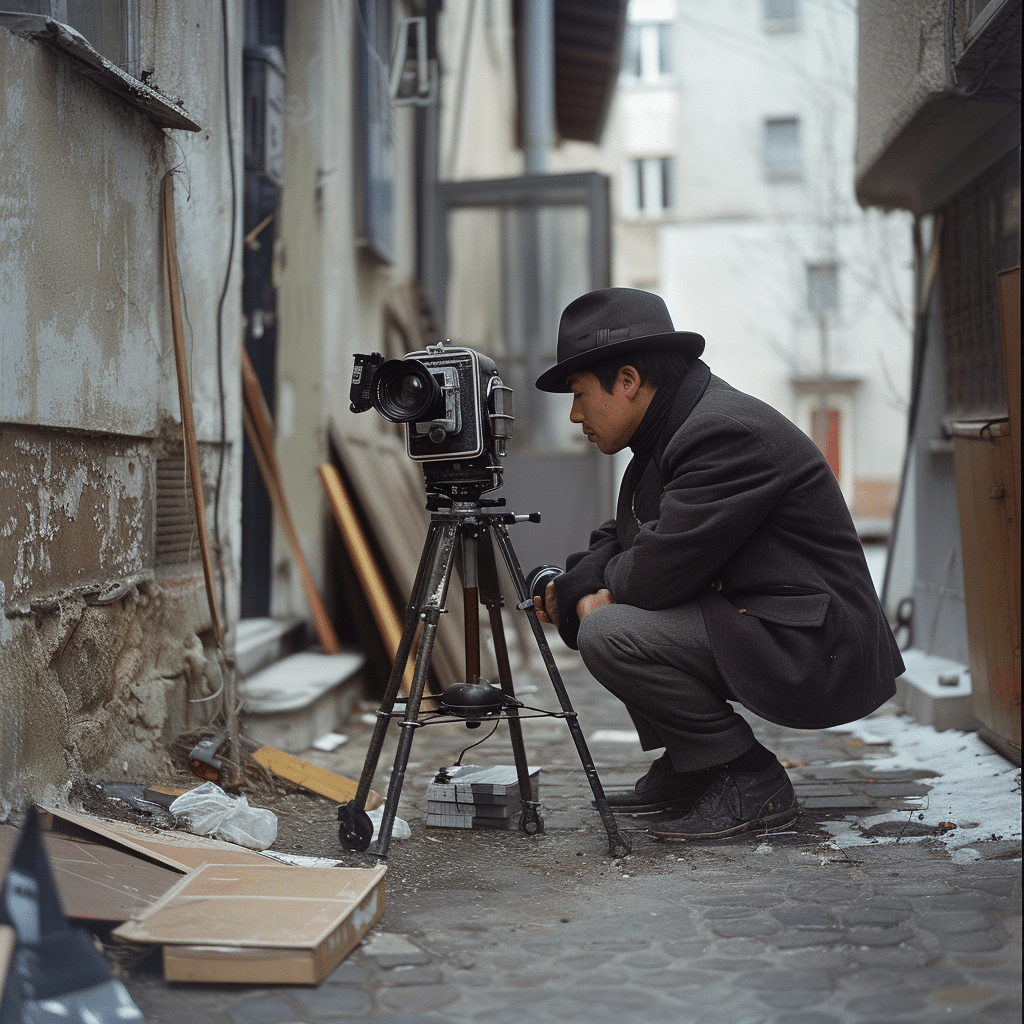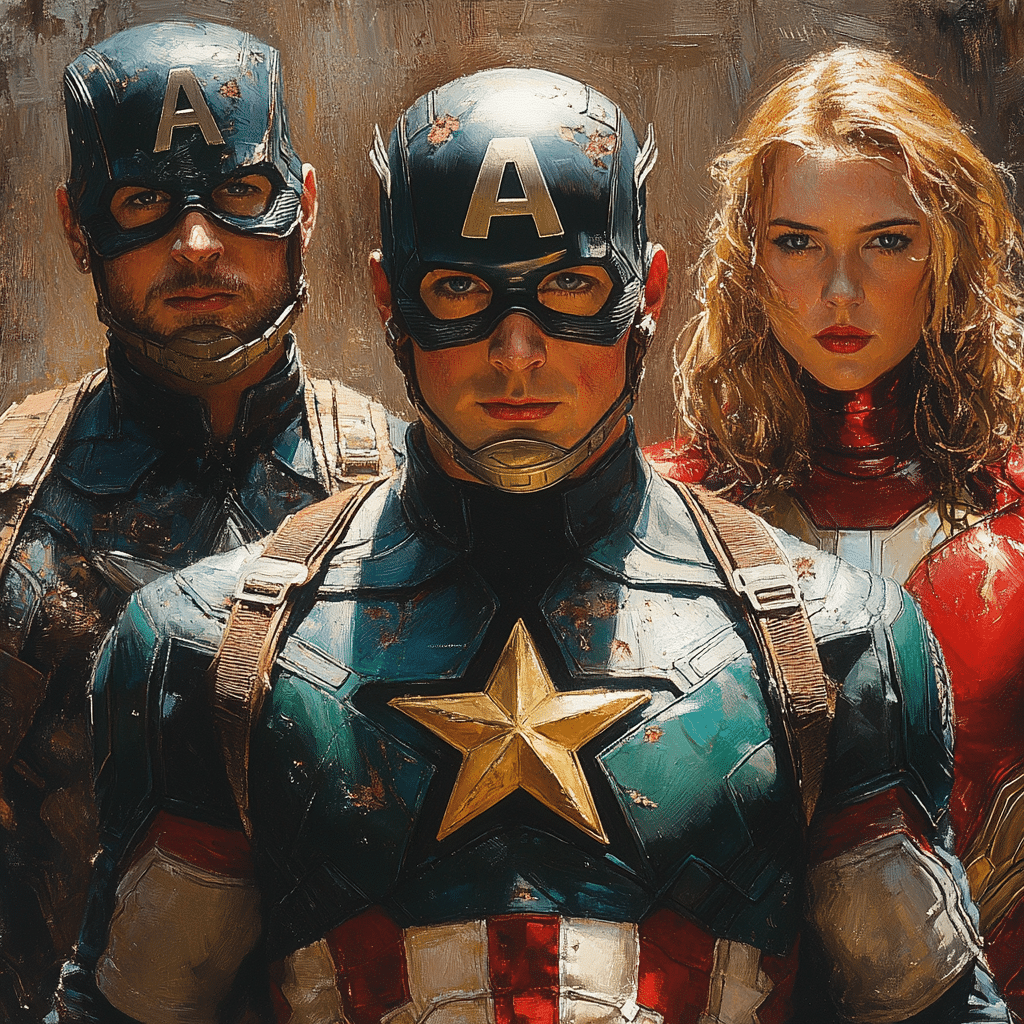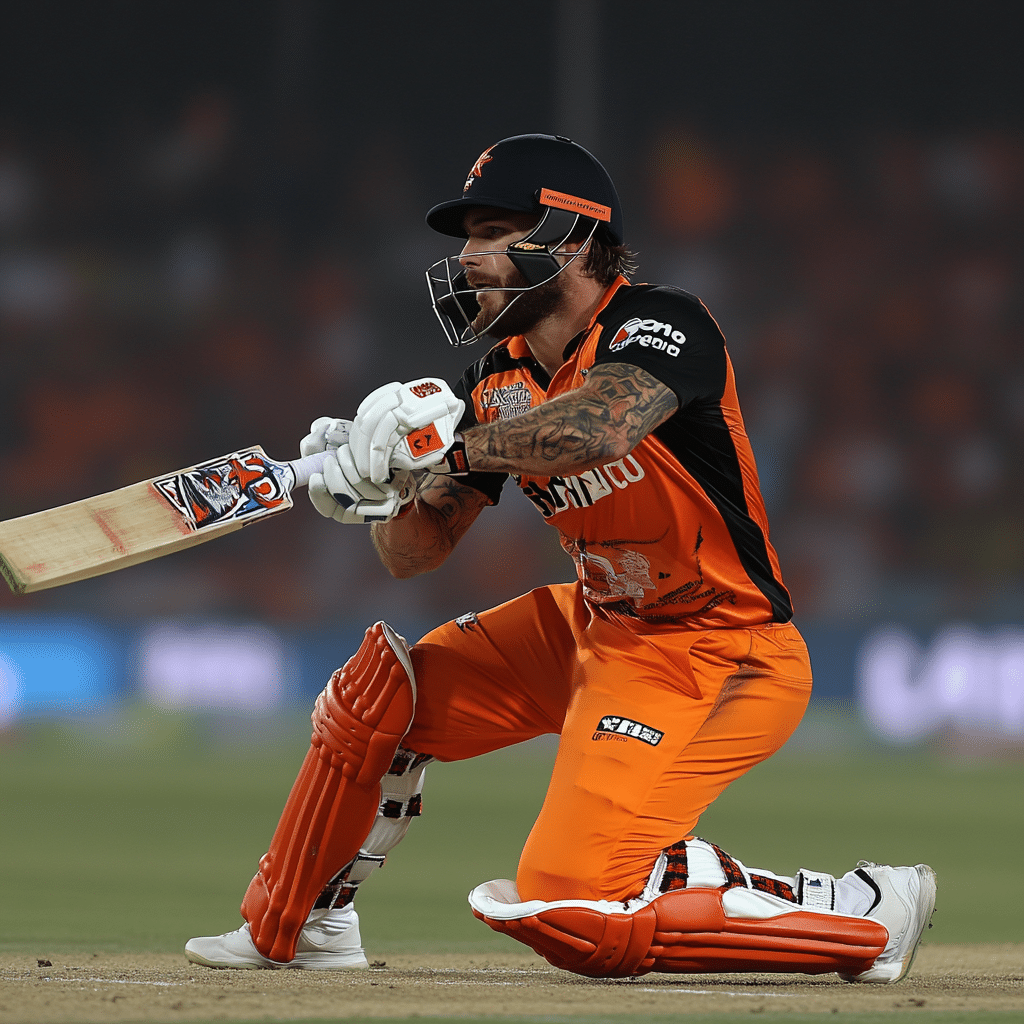The Resurgence of 70mm Film in Modern Cinema: “Oppenheimer” Leads the Charge
The whispers among cinema aficionados are growing louder as the resurgence of 70mm film cuts a path through the digital noise. It’s not just a comeback; it’s a grandiose renaissance, with Christopher Nolan’s “Oppenheimer” leading the charge. This is the golden ticket, the big-screen nirvana that has theatergoers itching for that sublime celluloid experience—one that’s got twice the width of 35mm and double the detail, like a buffet of visual splendor.
Remember when “Dunkirk” crashed onto the shores of our senses? Or when “The Hateful Eight” reminded us just how bloody beautiful film can be? Well, “Oppenheimer” is playing in that same sandbox, but this is a sandbox with jets, Einsteinian science, and the moral quandaries of the man who’d become known as the father of the atomic bomb.
This isn’t just about nostalgia; it’s also a clear technical march forward. 70mm film, known for its richer color palette and higher resolution, provides a sensory experience that digital filmmakers are still chasing. There’s a reason Nolan’s piece de resistance is also a piece de projector—especially with the film’s recent resurgence in IMAX 70mm in January 2024, offering cinephiles another taste of its magnetic allure.
“Oppenheimer 70mm” Viewing: An Escape into Cinematic Spectacle
When you sneak into a theater showcasing Oppenheimer 70mm, you’re not just watching a film; you’re stepping into an epic tapestry woven with visuals brighter than a Californian sun. There are scenes that burn themselves into your retina: the raw, emotive close-ups of Cillian Murphy as J. Robert Oppenheimer, the godfatherly landscape shots that engulf your entire field of vision, the spine-chilling depiction of the atomic bomb’s detonation—a scene so rivetingly detailed, you can almost feel the heat emanating from the screen.
Word on the street and Twitter feeds alike is that watching “Oppenheimer” in 70mm format is a bit like stepping into a time machine. You’re no longer just a fly on the wall; you’re in the room where it happens, with the visuals so sharp, so granular, that you could swear you’re inhaling the mid-century tension. Audience reactions border on religious experiences—there’s laughter, there’s awe, and sometimes, just sometimes, there’s a palpable silence as the credits roll.

| Attribute | Details |
|---|---|
| Film Title | Oppenheimer |
| Format | 70mm Film |
| Director | Christopher Nolan |
| IMAX 70mm Release Date | January 12, 2024 |
| Visual Experience | Higher resolution, more detail, and a richer texture on the big screen compared to 35mm |
| Unique Look | Difficult to replicate digitally; sought after by movie-effects makers |
| IMAX 70mm Screenings | Select IMAX theatres |
| Box Office Impact | Contributed to $183 million in gross; 50% Q3 profit increase for IMAX in 2023 |
| Audience Experience | Enhanced visual experience, authentic film presentation for cinema enthusiasts |
| Cinematic Significance | Represents the pinnacle of film presentation, superior to common digital screenings |
| Additional Screenings Benefit | Provides another opportunity for fans and new audiences to experience the film in its intended format |
| Relevance Date | Information relevant as of August 7, 2023 |
The Director’s Vision: Christopher Nolan’s Advocacy for 70mm Film
Nolan has built a cathedral to 70mm film, a temple where the celluloid faithful can gather and worship. This isn’t his first rodeo; Nolan has been beating the drum for film over digital since, well, forever. “Inception,” “Interstellar,” “Dunkirk” – these are his sermons, and we are the congregation. His past work paints him not only as a storyteller but also as a champion for the pure, unadulterated film experience.
Every inch of “Oppenheimer” feels crafted by Nolan’s unfaltering conviction for 70mm. Interviews with the man himself often border on poetic, with ruminations on the tactile nature of film and how it forms a bond between the viewer, the story, and history itself. He’s not just directing a movie; he’s orchestrating a movement, aided by a crew that’s as passionate about the medium as their fearless leader.
Behind the Scenes of “Oppenheimer 70mm”: A Craft of Precision
Capturing the essence of the atomic age is no small feat, and doing so on 70mm film requires an almost Herculean effort. The behemoth cameras, the precision needed for each shot, and the delicate handling of the film stock itself—it’s an intricate ballet where one misstep could end in a cinematic catastrophe.
This meticulous attention to detail is not only about the aesthetics. It’s also about authenticity. The techniques utilized by the production team resurrect the past with such care that it’s almost as if they weren’t just recording but also archiving history. “Oppenheimer”‘s cinematography team has had to be surgical in their approach, capturing every grimace, every wrinkle of the Atomic Age as if it were under the microscope itself.

The Theatrical Experience: Finding a Venue for “Oppenheimer 70mm”
Now, for the tricky part—where to actually witness this celluloid behemoth in all its 70mm glory? Movie palaces equipped to screen “Oppenheimer” in the format it deserves are as rare as a limited edition Julia Haart shoe. The journey to find one may take you from the quaint streets housing independent theaters to grandiose cinema halls steeped in history.
These bastions of the big screen, with their hallowed projectors and silver screens, have not merely adjusted but transformed to accommodate the film feast that is “Oppenheimer” in 70mm. Their projectionists are the unsung heroes, the ninjas in the dark that ensure every frame is as pristine as a hospital corner. In doing so, they’re not just showing a movie; they’re preserving a slice of cinematic heritage.
Analyzing “Oppenheimer 70mm” Through the Lens of Film Critics
What does the critical cabal have to say about “Oppenheimer” in 70mm? It’s like a standing ovation at the symphony—reviews peppered with grandiose adjectives and philosophical musings on the texture of the film. There’s something visceral about 70mm that cannot be replicated, no more than you could replicate a Van Gogh with your kid’s finger paints.
The impact of the format on Nolan’s storytelling is as clear as vodka. Critics note that the added granularity isn’t just a technical flex—it enhances every emotional beat, making each scene resonate with more weight than an elephant in a lift. In comparison to standard digital presentations, watching “Oppenheimer” in 70mm is akin to swapping your old glasses for HD prescription lenses.
The Audience’s Perspective: “Oppenheimer 70mm” as a Must-See Event
Fans are taking to the likes of Instagram, wielding hashtags like swords, to declare “Oppenheimer” in 70mm the cinematic event of the year. They rave in 280 characters or less about the majesty of the format—it’s not just movie night; it’s an event, a happening, a memory in the making.
This experience raises the bar—and perhaps the price of admission—but ask any of those who’ve immersed themselves in its splendor, and you’ll find few begrudging the cost. In their eyes, the value of the film goes beyond the ticket stub. It becomes a treasured anecdote, a “where were you when” moment, a testament to the enduring luster of shared cinematic experiences.
The Technical Details: What Makes “Oppenheimer 70mm” A Unique Technical Marvel
Let’s get down to brass tacks and talk specs for a second—what is it about 70mm that transforms “Oppenheimer” into a technical darling? It’s like the difference between a stainless steel cleaner with the power to make your appliances sparkle and the dish soap that only does half the job. 70mm offers a resolution that makes digital envy green, with an aspect ratio that embraces your entire field of vision.
The wizardry doesn’t end when the cameras stop rolling. The conversion process for wide release requires a meticulous touch, balancing the raw power of 70mm without losing a pixel’s worth of detail. Then there’s the matter of longevity—film buffs can sleep soundly knowing that long after our hard drives have given up the ghost, “Oppenheimer” 70mm will still be ticking away in a vault, waiting for future generations to discover.
The Future of High-Definition Storytelling: Will More Films Follow “Oppenheimer 70mm?”
In the wake of “Oppenheimer”‘s success—grossing a nifty $183 million for IMAX alone—there’s been a lot of chin-wagging and crystal-ball gazing about the future of 70mm film. It’s a costly affair, not just in dollars and cents, but in commitment and characterization. Studios will wrangle with the budget sheets, comparing the financial ledger with the creative allure.
Filmmakers with clout—think the Spielbergs and Tarantinos—could possibly tip the scales towards more 70mm extravaganzas. But it’s not just the big names; there’s a hopeful glint in the eyes of emerging auteurs too, hungry to carve their names in film stock. And with the industry’s profits hinting at a lucrative love affair with 70mm, the stage is set for more wide-screen wonders.
Conclusion: The Paradigm Shift in Film Viewing Experience Afforded by “Oppenheimer 70mm”
“Oppenheimer 70mm” has done more than burn up the screen—it’s been a firestarter for a new perception of film formats. Audiences are now not just watching a film; they’re experiencing it, letting it marinate in their minds and project onto their palettes of expectation.
As the dust settles on another blockbuster season, Nolan’s “Oppenheimer” stands not merely as a testament to great filmmaking but as a gilded invitation back to the theaters, where the magic of movies truly lies. It’s not a question of if this will stir a shift in the filmmaking landscape, but a question of how seismic that shift will be.
From the silks of the screen to the hushed whispers of the exiting crowds, “Oppenheimer 70mm” has cut a swath through the mundanity of multiplex mediocrity, recasting what it means to “go see” a movie. And in doing so, Nolan and his colossal cinematic experience have etched themselves into the hearts, minds, and retinas of cinephiles forever.
The Explosive Charm of Oppenheimer 70mm
Grab your popcorn and gird your loins, folks, because ‘Oppenheimer 70mm’ is hurtling straight toward your cinematic heart with the force of an atomic blast. And let me tell you, this is one film feast that’s too big for the small screen!
The Sheer Scale of 70mm
Talk about going big or going home! Shooting in 70mm means we’re in for a visual spectacle that’s sharper than Katie Nolans( wit. That film format is a titan, making every frame so real you’ll feel like you could waltz into the scene. Forget 4K—’Oppenheimer 70mm’ says hold my beer!
A Cast as Stellar as a Supernova
Oh boy, we’ve hit the motherlode with this cast of luminaries. Let’s just say it’s like the scream 2 cast and scream 4 cast met up, dialed the star power to eleven and said,Let’s make some magic. There’s enough talent in there to charge a particle accelerator!
Fashion and Film: Walking in Julia Haart’s Shoes
Get this: the film’s wardrobe might just walk off as stylishly as Julia Haart ‘s shoes. Yep, it’s true—even in the midst of scientific and military drama, you better believe the characters are strutting some serious style. Haart’s touch in footwear gives that extra bounce that leaps right off the screen.
Cinema’s Next Iconic Heroine
Whispers around Tinseltown say there’s a character here giving Elle Woods of the legally blonde cast a run for her money. With a combination of brains, brawn, and beauty, this gal might just have it all. She’s a brainiac bombshell blast!
The Sprint of Success: Carri Richardson’s Cinematic Parallel
You know who’s gotta be loving this? Carri Richardsons( fans. Why? Because ‘Oppenheimer 70mm’ takes off faster than Richardson on the track—once it starts, there’s no looking back! This movie sets the pace and keeps it there, folks.
The Unmissable Oz Factor
Let me tell ya, the film boasts a performance that’s as emotionally riveting as Yael Stones eyes are when she’s spilling the tea on screen. Yep, there’s an ‘Oz’ touch in here, for sure, with Yael Stone( cranking up the drama like it’s a land down under showdown.
Verdict?
Well, ain’t this a treat for the senses. ‘Oppenheimer 70mm’ takes you for a ride, alright—so fasten those seatbelts. With a spectacle this dazzling, don’t you dare blink, or you’ll miss the show!

Is it worth seeing Oppenheimer in 70mm?
– Well, shoot, if you’re a cinephile, seeing Oppenheimer in 70mm is like snagging front-row seats to a McCartney gig — a must-see! With the whole industry buzzing about the rich, buttery visuals that 70mm film delivers, it’s clear as day that nothing beats the experience. It’s the peak of visual quality that digital filmmakers are itching to replicate. So mark your calendars for January 12 and don’t miss out!
Why is Oppenheimer better on 70mm?
– Here’s the skinny — Oppenheimer looks downright amazing on 70mm because this film format is like the Hulk of movies; it’s twice as wide as the standard 35mm. That means it packs in details tighter than sardines, turning Christopher Nolan’s vision into an eyeball-popping spectacle on the big screen. Better detail, bigger experience—it’s a no-brainer!
Is Oppenheimer IMAX in 70mm?
– Heck yes, it is! Oppenheimer is storming back to IMAX theatres in 70mm glory, giving you another shot to bask in Christopher Nolan’s epic storytelling. Word on the street is that this visual feast starts January 12, so get ready to have your mind blown in the best way possible by the sheer magnitude of IMAX 70mm magic.
Will Oppenheimer 70mm come back?
– You bet your bottom dollar Oppenheimer’s 70mm is making a comeback! With its January encore in stunning 70mm IMAX, you’ve got another chance to soak up every frame of Nolan’s craft on the mammoth screen. And considering the film’s hefty chunk of change it raked in, it’s safe to say audiences are amped up for round two.
Is IMAX or 70mm better for Oppenheimer?
– Alright, let’s lay it on you straight: picking between IMAX and 70mm for Oppenheimer is like choosing between chocolate and peanut butter when you can have both. IMAX 70mm packs the punch of larger-than-life images with the uber-detailed glory of 70mm. It’s a cinematic sandwich that’s the best of both worlds.
Is 70mm better than IMAX?
– Alright, folks, here’s the deal: 70mm film is a total showstopper with its extra-wide format that lets you see the nitty-gritty like no other. But then there’s IMAX that blows up everything to larger-than-life size. So, is 70mm better? It’s apples and oranges, but for pure detail, 70mm takes the cake—though combining them both, that’s where the real party’s at!
Is it worth seeing Oppenheimer in IMAX 70mm reddit?
– Spot on, redditors! The buzz on the threads is unanimous: seeing Oppenheimer in IMAX 70mm is worth every penny. You get the double whammy of 70mm’s killer detail and IMAX’s colossal scale. It’s like being in the splash zone at SeaWorld, except with cinematic awesomeness splashing all over you.
Can a 70mm telescope see Saturn?
– Looking up at the stars, huh? A 70mm telescope sure can catch a glimpse of Saturn, with its iconic rings showing up like a celestial ‘hello.’ It might not be as detailed as Hubble’s snaps, but for an amateur stargazer, it’s like hitting the jackpot in Vegas, baby!
Is Oppenheimer actually better in IMAX?
– You can bet your lucky stars on that! Oppenheimer in IMAX is not just better, it’s like hitting the cinematic jackpot. IMAX’s massive screens and the bone-shaking sound systems turn Nolan’s masterpiece into a rollicking rollercoaster for your senses. But don’t just take our word for it; you gotta see it to believe it.
Should I watch Oppenheimer in 70mm reddit?
– Should you watch Oppenheimer in 70mm, you ask? Well, Reddit’s film buffs would give you a resounding “heck yes!” It’s like capturing lightning in a bottle: you get to witness Nolan’s masterpiece brimming with lush visuals in a format that screams ‘epic.’ Tie your laces and run to the nearest 70mm showing, ’cause you’re in for a treat!
What’s so special about IMAX 70mm?
– What’s so special about IMAX 70mm? Oh, let me count the ways! It’s like mixing the high-definition detail of 70mm film with the grandiose scale of IMAX, creating a cinematic smoothie that’s delicious for your eyes and ears. It’s Nolan’s Oppenheimer on steroids—bigger, crisper, and absolutely unmissable.
Is 70mm the same as 70mm IMAX?
– Not quite! While 70mm IMAX also uses 70mm film, think of it as 70mm film’s big brother with a gym membership. It’s all in the IMAX theatres’ ginormous screens and cutting-edge sound that turns regular 70mm into an even more immersive spectacle. Same family, but IMAX has a serious height advantage.
Will Hans Zimmer work on Oppenheimer?
– Hans Zimmer and his legendary composing chops are a match made in heaven for Nolan’s flicks. As for Oppenheimer, there ain’t no official word yet, but if history repeats itself, we just might hear his epic soundscapes echoing through the theaters once more.
What camera was Oppenheimer shot in?
– Oppenheimer was shot using IMAX cameras, which are basically the Ferraris of the film world. These bad boys capture every inch of the action in crystal-clear quality, making every frame a work of art. You can tell Nolan didn’t skimp on the tech when making this visual feast.
Is Einstein going to be in Oppenheimer?
– Einstein popping up in Oppenheimer? Well, don’t hold your breath. There’s no solid chitchat about him making an appearance, but considering the atomic bomb storyline, it wouldn’t be wild to expect a nod to good ol’ Albert. Whether it’s a full-blown role or a sneaky Easter egg, we’ll just have to wait and see!
















